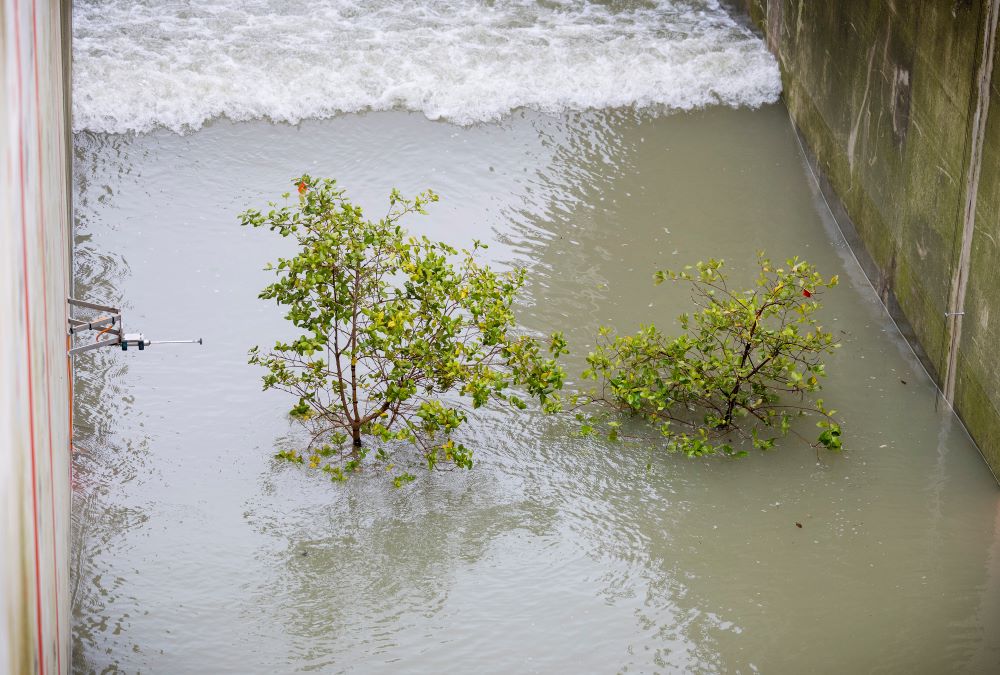
High waves startle mangroves for days during an experiment at the Delta wave flume in Delft. Researchers from Deltares and TU Delft keep increasing the force on the trees. They test how strong the mangrove trees are under extreme wave conditions and what contribution they make to water safety.
Mangroves are a crucial factor in the protection of tropical coastal areas. With their large roots, they hold a lot of sediment and dampen waves. “Many claims are made about mangroves that provide increased flood safety. But hard proof is scarce. If we really want to include nature’s protective role in our flood protection, measurements at full scale are indispensable. The scientific world is eagerly awaiting this,” says Bas Hofland, hydraulic engineer at TU Delft and project leader of the ‘WOODY’ project.
Bregje van Wesenbeeck, ecologist and expert Building with Nature at Deltares and also working at TU Delft, has been studying the behaviour of vegetation under extreme hydraulic conditions for years. “Models that predict how trees behave in water are based on static sticks. However, under stormy conditions with high waves, trees bend.” The wave attenuation may be different from what is thought, as trees move with the waves. In order to make the experiment happen, Van Wesenbeeck spent years cultivating tropical mangrove trees in a greenhouse at Deltares. It is now finally possible to do tests with real trees, on a true scale.
Monitoring waves
The Delta flume, the world’s most powerful wave flume, is currently being used to study how much wave power mangroves can absorb. The trees receive an ever-increasing amount of water and the waves swell. By monitoring speed and wave height, the researcher keep a close eye on how the waves are attenuated.
Damping of waves by trees
They measure how the trees move and measure the load on the trees. This allows them to estimate the damping of the waves. To this end, Hofland developed a new measurement method that is very cost-effective. “Instead of taking the whole tree out of context and hanging it in a system of external force gauges, we now use the tree itself. We measure the bending of the trunk directly, and with dedicated sensors we can determine the force on the tree.” This method has already been used on trees on land. It is still exiting to see whether the sensors stay in place under the force of up to three-metre-high waves.
